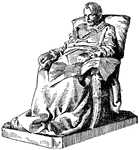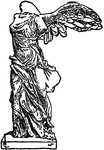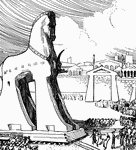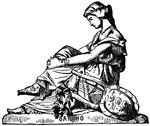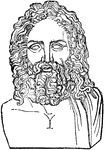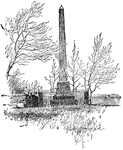
Mary Washington Monument
Monument in the memory of Mary Washington at Fredericksburg, VA. Mary Ball Washington (1708 –…

Choragic Monument of Lysicrates
Of a less ambitious class were those monuments erected in honor of the victorious choragus in musical…
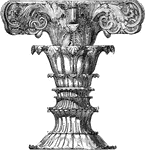
Finial of the Choragic Monument of Lysicrates
Of a less ambitious class were those monuments erected in honor of the victorious choragus in musical…

Head of Neptune
"The following cut from an antique in the British Museum, represents the head of Neptune. The hair rises…

Osiris Pier, Medinet Habu
Piers and columns sustained the roofs for chambers that were too wide for single lintels, and produced,…

Bust of Pericles
"The enormous influence which Pericles exercised for so long a period over an ingenious but fickle people…
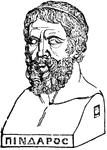
Bust of Pindar
"Pindar, though the contemporary of Simonides, was considerably his junior. He was born either at, or…
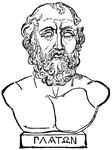
Bust of Plato
"Plato was born in Athens in 429 B.C., the year in which Pericles died. His first literary attempts…

Pulaski Monument
"Review of Confederate troops on their march to Virginia, in front of the Pulaski Monument, Monument…
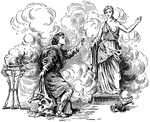
Pygmalion
"The story of Pygmalion and his statue is in all probability an allegory. Pygmalion was a virtuous and…

Ramses II Seated
"A black granite statue of the youthful Ramses II. It is probably a faithful portrait. No better work…
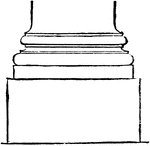
Scamillus
In ancient architecture, a sort of second plinth or block under a column statue, to raise it.
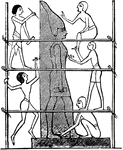
Egyptian Sculptors at Work
"Workmen are represented polishing and painting statues of men, sphinxes, and small figures; and two…

Bust of Socrates
"This celebrated philosopher was born inthe year 468 B.C., in the immediate neighborhood of Athens.…
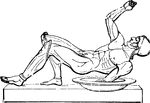
Fallen soldier
"Figure of a fallen warrior, represented among the sculptures now at Munich, belonging to the temple…

Sphinx at Thebes
Nine hundred sphinx's with rams' heads, representing Amon, were built in Thebes, where his cult was…

Statue
This statue is of Saer de Quincy. He was one of the leaders of the baronial rebellion against King John…

Statue
This statue depicts Godfrey of Bouillon who was one of the leaders of the First Crusade during medieval…

The Statue of Liberty
"The Statue of Liberty was given by the Frenchmen to the people of the United States. The statue cost…

Egyptian statue
"Egyptian Statue in black basalt. Heroic size, in the British Museum." —D'Anvers, 1895
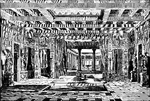
The Interior (Atrium and Peristylium) of Pansa's house at Pompeii, Restored
Illustration of a restored atrium and peristylium of the House of Pansa at Pompeii. The impluvium, pool,…
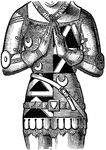
Jupon of Sir Edmund de Thorpe
"Jupon from the Effigy of Sir Edmund de Thorpe, Ashwel-Thorpe Church, Norfolk."—Aveling, 1891

Bust of Thucydides
"Thucydides, the greatest of the Greek historians, was an Athenian, and was born in the year 471 B.C.…

Trojan horse
"According to the poets, it was by stratagem that this famous city was at last overcome. They tell us…

Statuette Vase
This statuette vase is designed in an Elizabethan style. The statuettes represent Newton, Bacon, Shakespeare,…

Warren's Monument
Warren's Monument was created in memory of Mason and fallen Bunker Hill hero Dr. Joseph Warren in 1794…

Woman Tending to Baby Carriage
A cartoon of a woman tending to a baby carriage, with a statue of a Native American holding an ax behind…
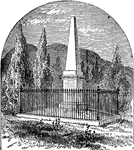
Colonel Eleazer Derby Wood's Monument at West Point
Eleazer Derby Wood (1783 – September 17, 1814) was an American Army officer in the War of 1812.…
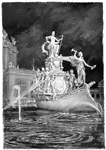
World's Fair
"The World's Fair at Chicago. Central portion of MacMonnies Fountain- effect of electric light."—E.…

The Wyoming Monument
The Monument marks the grave site of the bones of victims of the Wyoming Massacre, which took place…
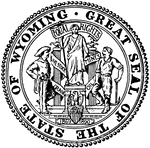
Seal of Wyoming
The Great Seal of the State of Wyoming. The seal shows two men symbolizing livestock and mining next…

The Yorktown Monument
Yorktown was the base of British General Charles Cornwallis during the 1781 siege, which was the last…


